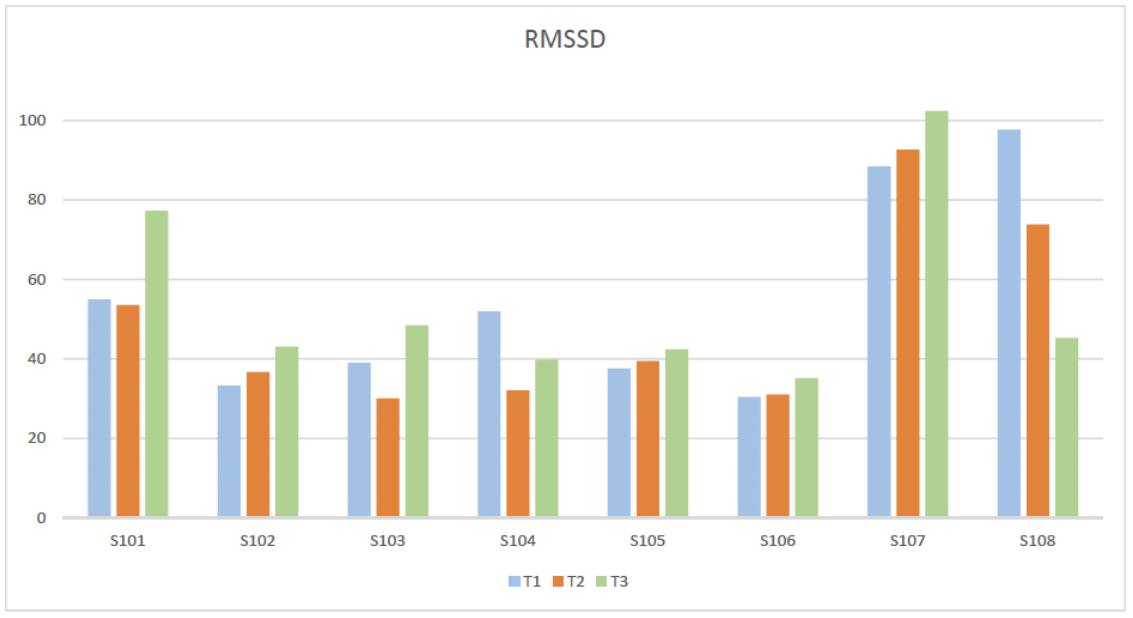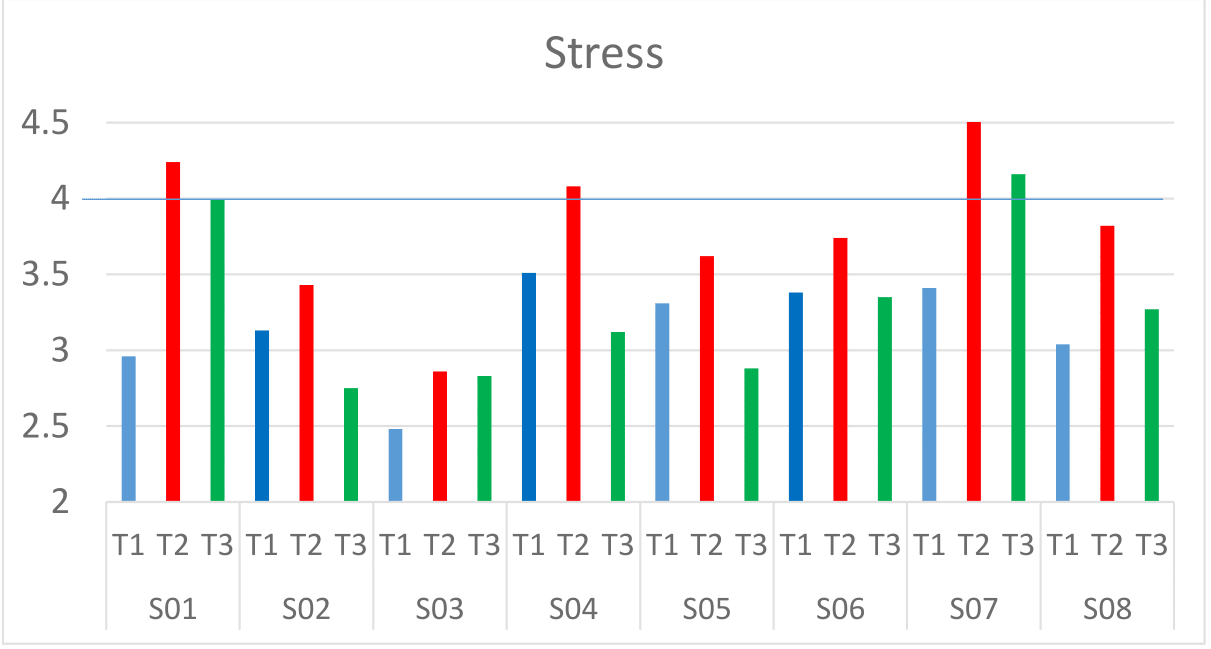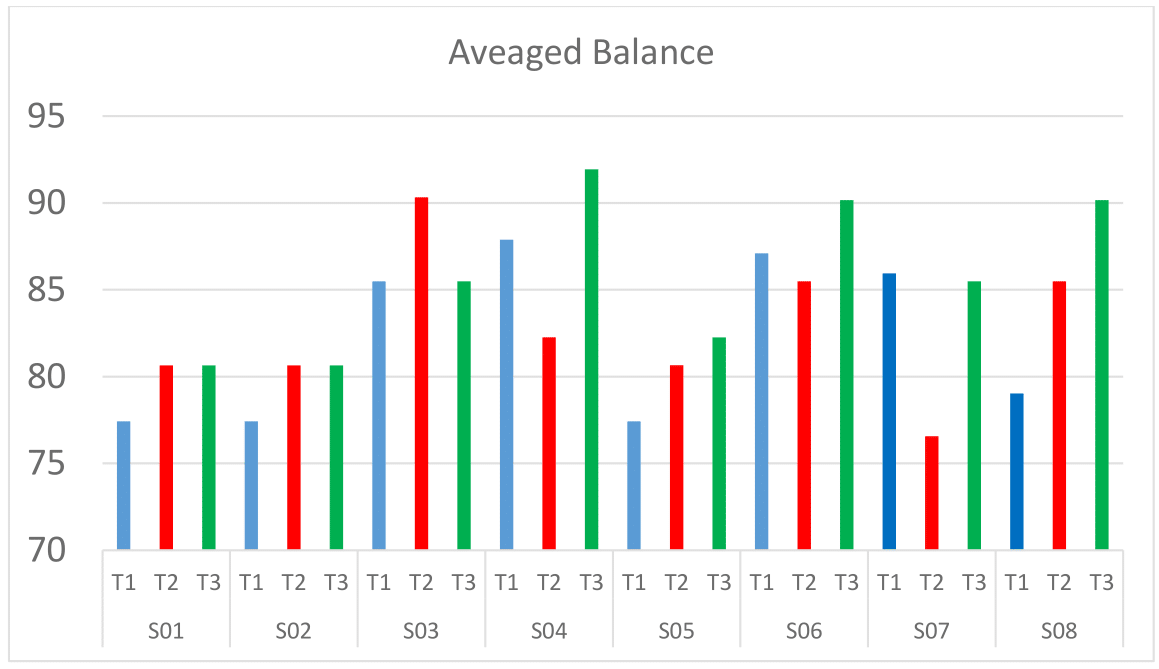Journal of
eISSN: 2572-8466


Research Article Volume 10 Issue 6
1Rehabilitation Medical Hospital – Medical Care, Israel
1Rehabilitation Medical Hospital – Medical Care, Israel
2Research Institute of Physical Culture and Sport, Russia
Correspondence: Konstantin Korotkov, Research Institute of Physical Culture and Sport, St. Petersburg, Russia
Received: December 15, 2023 | Published: December 29, 2023
Citation: Paz SH, Slonim MS, Korotkov K. Effect of a short-term integrative program on clinical parameters of patients: Pilot study. J Appl Biotechnol Bioeng. 2023;10(6):194-197. DOI: 10.15406/jabb.2023.10.00348
Background: Combining conventional oncology with evidence-based complementary treatment approaches is an emerging field that aims to treat patients comprehensively to improve their well-being and spiritual and psychological needs.
Objective: To evaluate the effectiveness of an integrative program comprising physical and psychological domains delivered for five consecutive days on several parameters of patients with different health issues.
Methods: Eight patients (mean age 56.5 years) enrolled in the program as an add-on to their standard of care treatments. Their health parameters were measured at 3 points during the study: at baseline before the start of the intervention, on the fifth (last) day of the intervention, and four weeks after completion.
Conclusion: An integrative intervention can provide non-pharmacologic recovery support that optimizes their well-being and reduces the symptom burden in patients.
Keywords: cancer, integrative program, HRV, Bio-Well, survivors
Complementary and Alternative - Integrative Medicine - has become essential to modern medical development. The Consortium of Academic Health Centers for Integrative Medicine in the USA defined integrative medicine as follows: "Integrative medicine and health reaffirm the importance of the relationship between practitioner and patient, focuses on the whole person, is informed by evidence, and makes use of all appropriate therapeutic and lifestyle approaches, healthcare professionals, and disciplines to achieve optimal health and healing.”1
In other words, we can formulate it as a transition from the medicine of a battlefield, where it is necessary to save a life and send a patient to the homeland, to preventive medicine, focused on supporting health and wellness.
The integrative approach is based primarily on in-depth functional diagnosis, using all the capabilities of modern medicine, taking into account the patient's psychological status, the choice of directions and methods of therapy, and the accompaniment of the patient at all stages of treatment.
For a long time, while accumulating and systematizing knowledge about human physiology, medical science followed the path of fragmenting knowledge from the general to the particular, highlighting the cause of disease of a specific organ or system and emphasizing the study of biochemical and genetic mechanisms. Such an approach allowed the creation of many highly effective medicines. Still, at the same time, it promoted the transition of many diseases to the chronic phase and the appearance of numerous unpredictable side effects. In addition, the pharmacological approach does not take into account the individual characteristics of the patient, as well as the influence of the psychological state, chronic anxiety, and stress. Therefore, having accumulated sufficient experience and knowledge, medical science returns to considering the particular to the general.
Integrative medicine is a philosophy of care that addresses the patient's physical, emotional, and spiritual needs.
The US National Center for Complementary and Alternative Medicine (AM) categorized AM branches into five main groups: (1) traditional medical techniques, such as whole medical systems; (2) mind-body therapy; (3) biological substance-based treatments; (4) manipulative and body-based treatment; and (5) energy medicine. We can reformulate these groups of specific diagnostic and therapeutic methods used in Integrative Medicine (Figure 1).2
The InHeal Therapeutic process was developed to improve the general health status of individuals with cancer and chronic diseases, including the physical and psychological domains that comprise holistic well-being. The five-day process includes preparation of body and mind to allow positive entrance to the process. This preparation process includes personal treatments and group sessions to establish body and mind balance and strengthen the body before the InHeal process. The physical part includes acupuncture, naturopathy, yoga, reflexology, and breathing sessions. Emotional healing and energetic personal treatments are conducted to reveal hidden, often subconscious, traumas and fears. These include active washout sessions and The Journey® method and are provided by trained and qualified emotional therapists. In addition to these two treatments, the participants undergo two "meditation for healing and forgiveness" sessions, a" healing the inner child" meditation session and a Tong Lan meditation. The Tong Lan meditation and the Journey® method deal with forgiveness processes whereby traumas, fears, and associated emotions rise during earlier stages. These induced emotions are met with acceptance, warmth, forgiveness, calmness, increased peace of mind, and positive balance.
During the 5-day workshop, additional treatments and activities occur, including group dynamics, yoga breathing sessions, dietary consulting, acupuncture, energetic washout, The Journey® guided imagery session, mindfulness, vocal yoga therapeutic sessions, and reflexology. A psychologist oversees the entire process. This study evaluated the change in health-related QoL among patients with cancer and cancer survivors following participation in the InHeal process. We hypothesized that an improvement in QoL would be observed following participation in the program.
Participants and setting
Eight patient volunteers, seven women and one man, aged 45 to 56 years, participated in the InHeal program as an add-on to their standard of care treatments. Individuals interested in enrolling in the study were screened according to eligibility criteria. Individuals were excluded from participation in the study if they had severe pain due to other conditions that may confound assessment or self-evaluation of the pain associated with their problems, if they had a personality disorder or mental retardation, or if they had a diagnosis of social phobia, generalized anxiety disorder, psychosis, major depressive disorder, schizoaffective disorder, or any other disorder with psychotic symptoms according to the clinical opinion of the investigator. One patient was in an active stage of cancer, five patients were in remission stage after the treatment of different types of cancer, and two patients had fibromyalgia. The intervention took place at the therapeutic center. The participants received full-board accommodation for the five days of the intervention, including meals supervised by a dietician. After concluding the 5-day intervention, the participants returned to their homes.
The study was approved by Shaare Tzedek Medical Center's ethics committee (approval number 0532-20-SZMC, dated 11/10/2021). All participants received an explanation about the study and its procedures and signed an informed consent before enrolling.
Intervention
During the 5-day intervention, the following activities were performed:
Day 1: (1) Intake: recording of medical history and concomitant medications (on the first day of the intervention). (2) An orientation meeting on the first day of the intervention designed to (a) obtain participants' understanding and commitment to the process and (b) explain the benefits of the special diet used during the process (no sugar, no white flour, food that is rich in vegetables, protein, and antioxidants). (3) Group dynamics to disclose each participant's reasons and goals for being part of the InHeal process (practice of mirror learning). (4) A lecture dealing with mindfulness practices and a screening of the movie "Heal" demonstrates success stories as a result of these practices to create the right atmosphere for the process. (5) A guided imagery session. (6) Introduction to meditation.
Day 2: (1) A yoga session, (2) a personal dietary session with a naturopathic physician aimed to strengthen each participant's physical condition by making a personalized diet change, (3) an acupuncture personal treatment, (4) a trauma release yoga practice.
Day 3: (1) A yoga session, (2) an energetic washout session: a deep breath practice that is supported by massaging trigger points to restart the flow of energy throughout the body, (3) a guided imagery session.
Day 4: (1) A yoga session, (2) The Journey method® to uncover root causes and support emotional healing, (3) Tong Lan meditation, (4) Healing the Inner child therapeutic session, (5) personal reflexology treatment.
Day 5: (1) A yoga session, (2) a forgiveness and release ceremony, an emotional process that enables the participant to forgive and reframe their old narrative to create an opening for a new beginning.
The participants received a new recorded meditation each day.
The following methods have been used in the study:
Heart Rate Variability (HRV) analysis.
Electrophotonic imaging (EPI) with Bio-Well instrument (www.bio-well.com).
Blood test.
Demographic parameters were analyzed using descriptive statistics. A one-way multivariate analysis of variance (MANOVA) for repeated measures was conducted to examine the differences among the three time points for continuous variables.
Procedure: All the people were measured in the same place in the morning before the session, five days later, and one month later.
HRV
Results of HRV analysis are presented in Figure 2 & 3.

Figure 2 Dynamics of individual heart coherence in three sessions. T1 – initial, T2 – after 5 days course, T3 – after one month. S101-S108 – participants.

Figure 3 Dynamics of individual heart parameter RMSS in three sessions. T1 – initial, T2 – after 5 days course, T3 – after one month. S101-S108 – participants.
RMSS is a root mean square of successive differences between normal heartbeats.
EPI Bio-well
After one month, the energy increased for all the people and came to the optimal level (from 40 to 60 J*10-2).
After one month, the Stress level parameter decreased for three people and increased for five people, but it was optimal for everyone - from 2 to 4. An increase in Stress level indicates higher activity of the autonomic nervous system.
After one month, sympathetic-parasympathetic balance increased or stayed in the optimal zone for everyone.
After one month, the Adrenals Gland and Pancreas Energy increased for everyone.
After one month, the Thyroid Gland and Spleen Energy increased for seven people and decreased for one person.
After one month, the Hypothalamus Energy increased for seven people and decreased for 1.
After one month, the Spleen Energy increased for six people and decreased for two.
After one month, the Chakras Alignment increased for seven people and decreased for 1 (Figures 4–6).

Figure 4 Dynamics of individual energy parameters in three sessions. T1 – initial, T2 – after 5 days course, T3 – after one month. S101-S108 – participants.

Figure 5 Dynamics of individual Stress parameters in three sessions. T1 – initial, T2 – after 5 days course, T3 – after one month. S101-S108 – participants.

Figure 6 Dynamics of individual averaged balance parameter in three sessions. T1 – initial, T2 – after 5 days course, T3 – after one month. S101-S108 – participants.
Endocrine system
EPI Bio-Well system allows the determination of the energy parameter for different organs and systems.4 It was shown that after one month of the treatment, the energy parameters for the Endocrine system, Pancreas, Thyroid gland, and adrenal gland increased for all the people (see example in Figure 7).

Figure 7 Dynamics of individual endocrine system parameters in three sessions. T1 – initial, T2 – after 5 days course, T3 – after one month. S101-S108 – participants.
Blood test
Some results from the blood test analysis in three sessions are presented in Table 1 in the Appendix. We may see improvement in the main parameters for most of the participants.
As we see from the presented data, most of the group's measured health parameters improved. We attribute the high rate of improvement in health parameters observed in the InHeal process to the firm structure of the program, which consists of a combination of personal treatments and group support sessions. Throughout the program, all activities are supervised and followed closely by the psychologist, allowing particular observation and specific personal guidance. Each participant is closely watched, treated, and followed through to complete the transformation process. The resurfacing of trauma reveals subconscious programming that the traumas had created). Through the specific methods used in the Inheal program, the participants can create a new narrative that allows them to heal themselves emotionally.
For most people, training positively affected their energy, sympathetic–parasympathetic balance, and endocrine system. Results were pronounced immediately after the treatment and kept increasing one month after.
Limitations of the study
This pilot study evaluated the short-term integrative program on the health parameters and well-being of a small group of patients with different health issues. The size of the group did not allow for group statistical analysis. The following study should include a control group and a group of people substantial for statistical analysis.
This research was done as part of a film documenting participants over a year and in particular during the five days workshop at Medical Care. The series "The Pioneers" is part of the film project "The 1 Field" produced and directed by Tsipi Raz and financed by Universal Fundraising Organization.
The authors declare no conflicts of interest.
None.

©2023 Paz, et al. This is an open access article distributed under the terms of the, which permits unrestricted use, distribution, and build upon your work non-commercially.